The Character of Cricket Read online
Page 5
Around about the half-way line there were two gold and yellow striped tents, both for sponsors. Then came the advertising boards in a crescent and the ground starts to bulge outwards into an appropriate shape for cricket. The terracing at the Patti Pavilion end is fine for watching cricket but far too far away for rugger spectators. For big rugby games they erect a special temporary stand in front of the permanent one.
The pavilion is on the north side. A large sign says ‘Swansea Cricket and Football Club’, and it is the sort of architectural shambles which I became quite used to as the season went on. Lawrence Hourahane, the assistant secretary, who seemed to be doing a good job of being everywhere at once, gave me the guided tour leading me through the rabbit warren of little rooms up on to the roof, across some duck-boards to a small turret which was the BBC commentary position and where he left a scribbled note for Andrew Hignell, the statistician who knows all that is to be known about Glamorgan cricket. The note said, ‘Bronwen was here.’ The view is magnificent.
From there we went down to the press and scorer’s box where the Glamorgan scorer, Byron Denning, gave me a humbug, determinedly not giving one to Mr Hourahane, who was obviously being held responsible for the behaviour of the Telegraph correspondent’s dog. This may be a libel, but I was given to understand that it was the Telegraph man’s dog. It had been sick on the carpet, though ‘carpet’ is being a bit generous. It might have been a carpet once, but not for some years. It now lay bundled in a corner, and Mr Denning, who is also secretary of the Ebbw Vale Cricket Club, wanted it removed. ‘I’m very fond of dogs,’ he said irritably, ‘but I think it’s ridiculous to bring one to the press box to watch cricket.’ The censure sounded all the better for being delivered in a heavy Welsh accent.
Retreating, we took a cup of tea in the players’ dining-room, where I was pleased to see the nut-brown wrinkly figure of P.B. Wight who had come to umpire. I used to watch him play for Somerset. Although the pavilion was being used as a cricket pavilion, it reeked of rugby. Practically all the photos and all the mementoes concern Swansea RFC. Almost the only cricketing things were a photo of Gilbert Parkhouse being presented to King George VI at Lord’s and a cartoon of Tony Lewis and Majid Khan, the only time two Glamorgan players have captained opposing teams – England and Pakistan – in a Test match. I can’t think many counties could boast as much.
Outside, Mr Hourahane passed among the crowd saying, ‘The public address system is not working, but Glamorgan have won the toss and elected to bat.’ Luckily the crowd was on the small side, though not as small as the crowd for the Zimbabwe match. Then they took nineteen pounds on the gate the first day, so Mr Hourahane decided to let people in free for the next two. The result was that even fewer turned up. They’re not stupid, the Welsh – they know that it’s wise to look a gift horse in the mouth. At this point Byron Denning turned up to say that they’d got the name of the Leicester scorer wrong and – he asked this very pointedly – had Mr Hourahane made the hotel booking for next week and checked to ensure the place existed? Mr Hourahane went rather red at this and admitted that in Edinburgh, where they were playing Scotland, they had arrived late at night to find their rooms given away, and in Hove they had found the shutters up because the respectable three-star hotel had gone bust since they made the booking.
From the office to the left of the pavilion we could look right across the Bristol channel to North Somerset and the Quantocks. The other day, apparently, HMS Glamorgan was in port, and when the officers came to the ground it was so clear that you could see what crops were being grown in each different field.
Another faintly tall Swansea story, attributed like so many items of South Wales folklore to Wilfred Wooller, is the notion that when the tide comes in the pitch changes colour. I put this to the St Helen’s groundsman, Richard Stevens, but he said that although the ground was unusual that was not an effect he had noticed. The main problem is that it is so sandy. Later on, in the lunch interval, to my horror, he took out a pen-knife to demonstrate this, but despite hacking a sizeable chunk out of his turf we did not strike sand. ‘Obviously doing my job better than I thought,’ he said.
Mr Stevens is a tall sunburned figure with a golden beard, and you might have guessed that he had been a groundsman all his adult life except for a spell in the Guards. He started at Blundells School in his native Tiverton, broke off for a spell with the Coldstream Guards, came back, moved to Monmouth School, was poached by Glamorgan to look after Sophia Gardens, the county ground in Cardiff, went to Worcester where he won the Groundsman of the Year Award, and then came to Swansea to succeed George Clement.
The great problem with the ground is the joint use. Part of the cricket square actually extends from the dead ball line to the goal posts. One of his headaches is the maddening little holes left by the players’ studs. The ones left from their lining up behind the posts when a goal is being kicked are bad enough, but he has a fit each time there is a push-over try. He also has some difficulty with rugby supporters who sit in the stand for the match and then walk over to the club house for a pint after the game. The cricket square is on the direct route and he has to try to educate members to go round it. Fences and ropes are not an answer because they apparently challenge people to hurdle them. When they do they invariably fall heavily and make a mess of his wicket.
For an hour or so I sat happily listening to groundsman’s lore. The sixty tons of sand that go on to the rugby pitch at season’s end; the two and a half hundredweight of Surrey loam with which he top-dresses his wickets; the daily mowing of the outfield; cutting the wickets to three-sixteenths of an inch; pleasing Glamorgan and Swansea, who play their South Wales League matches at St Helen’s too – not to mention the Lord’s Taverners and the annual firework display on November 5th; the sterility of ‘marl’; the rigorous demands of the authorities at Lord’s; the mixed blessing of working for the council (it’s a council ground and the clubs only rent).
Then we walked across behind the hospitality tents, pausing to exclaim over two patches of dead brown grass where the tea ladies had emptied scalding water. They would have to be replaced with fresh turf. There was fresh grass at the entrance to the rugger players’ tunnel, worn down by the regular entrances and exits. ‘Floreat Swansea’ said the legend below the coat of arms.
By Fred’s Shed, the public bar where Fred was once the licensee, we found George Clement, Richard Stevens’s predecessor, sitting on an empty beer crate. I asked him about the Wooller tale of the changing colour when the tide came in. He laughed at this and said that it wasn’t so, but that when the tide came in it brought salty breezes which made the ball move in the air and off the seam. He’d noticed that his glasses always misted up when the tide came in, and he described graphically where each one of Sobers’s sixes landed, and recalled the 31,000 who came for a famous West Indies match and how, in the old days, the touring teams had to hunt out a drink on those dry Welsh Sundays. Somehow they had always succeeded.
This was a cue for a pint ourselves, so we went to the Cricketers and drank Ansell’s. A good cricketing pub with more cricketing mementoes and pictures of Wilf and the rest than you see in the pavilion. The place mats are old scoresheets of famous Glamorgan games, a series of ten. All of them were rather wonderful and I enjoyed reading about the victory over Simpson’s Australians of ’64. Best of all, however, was ‘The Amazing Match’ of ’51 when Glamorgan and South Africa had tied the first innings and then, chasing 148, the tourists were 54 for nought at tea. Then the Welsh took all ten wickets for 29, McConnon did a hat-trick and 25,000 supporters sang ‘Land of My Fathers’ and took a spontaneous collection for the victors and I wished that I had been there.
But I had a good day nonetheless. Younis hit a splendid straight six into the vice-presidents’ yellow plastic seats and Javed made 89 and came into the office in shorts and a T-shirt which said ‘Cheeky Jewellers, Sharjah, Dubai’ and said that it was scandalous to get out for 89 and he should have made 189. Rodney Ontong w
eighed in with 56, and they were able to declare at 289 for six.
I took a taxi back to the station. We drove very fast to catch the train, and the driver told me in lilting Swansea accents how he had played professional cricket himself but a wound with the Army in Malaya had put paid to that. At a cross roads we got stuck behind a dithering driver and he blew the horn and shouted out to the passers-by: ‘I wouldn’t let ’er drive sheep.’ Again I thought of Dylan Thomas – and again as he ogled a pretty girl on the pavement. He turned to me a moment later and asked if I’d been to the Gnoll at Neath. ‘Finer ground than St Helen’s. Older too. W.G. Grace played there. Got a pair, he did.’
I thought he was having me on, but later I checked and it was true. The year was 1868 and the twenty-year-old W.G. was playing at Neath for the United South of England. He made nought in the first innings and nought in the second.
So maybe he was right and I should have gone to the Gnoll. But I’d still settle for St Helen’s even though the dog was sick on the carpet and there was no vacancy at Mrs Evans’s and the grass stays just as green even when the tide comes in.
Edgbaston
I had never realised, until I went to Edgbaston, that P.G. Wodehouse used to wear a Warwickshire tie. Dulwich, Le Touquet and Long Island are the localities I associate with Wodehouse, but there in the club room of the Edgbaston pavilion is a letter from the old boy to Leslie Deakins, who was then the secretary of Warwickshire. ‘How awfully good of you to send me the Warwickshire tie,’ wrote Wodehouse. ‘It was just in time, for today I have to go out to lunch (a thing I do about once a year these days), and now I shall be able to dazzle all beholders. On these occasions I never wear any tie except for the Warwickshire, and the old one was beginning to show its years.’ This was in 1974, when he was well into his nineties.
The plot thickens if you wander across the room, glancing out at the cricket through the enormous plate glass windows, and look at another glass case in which you will find what might properly be described as Jeeves’s ball. This is not an unsavoury relic of Bertie Wooster’s batman, but the cricket ball with which the Warwickshire bowler Percy Jeeves took seven Worcester wickets for 34 runs. That was in 1913, the year Jeeves took 106 wickets for the county. You can see him in the back row of the 1913 team photograph, a small, rather dapper man with all three blazer buttons done up very tight. His contemporaries thought he might become one of the great bowlers, but he was killed in the Great War – only to live on in the fiction of P. G. Wodehouse.
Wodehouse evidently saw him play against Gloucester at the Cheltenham Festival and took a fancy to the name. Hence a great comic character. And hence Wodehouse and the blue and gold and silver necktie.
For the record, Wodehouse played cricket for the Dulwich College eleven. The school magazine recorded: ‘Bowled well against Tonbridge but did nothing else. Does not use his head at all. A poor bat and very slack field.’ Later he did well with his leg breaks while in a German internment camp during the war. The real-life Jeeves scored 1,193 runs at an average of 16.12 in his tragically short career and took 194 wickets at 20.20 apiece. He bowled fast medium and hit hard. He once put a six clean over the pavilion.
It was quiet when I visited the Birmingham ground, which was scarcely surprising because the county’s opponents were Zimbabwe. As Alan Smith, the Warwickshire secretary, remarked, Zimbabwe could bat a bit but their bowling was ‘rather less good than most counties’. The first day had been ruined by rain and Warwickshire were cruising to over three hundred for the loss of only two wickets. The members in the club room seemed a little perplexed.
‘Where exactly is Zimbabwe?’ asked one.
‘It used to be Northern Rhodesia,’ replied another, getting it not quite right but speaking with an enviable air of authority.
‘I would have expected to see some coloured people,’ said the first member, peering out at the light tan faces of the Zimbabwe men.
His companion continued to speak authoritatively, though I wasn’t sure whether he was still muddling the opposition with Zambia or not. ‘Football’s the national game over there,’ he said, ‘but they’re sending some coaches into the coloured areas to get them to change to cricket. They’re hoping for Test status before long.’
If that happens they will certainly have the flag for it. Mr Mugabe’s government have come up with a very exotic affair with a large star on the left and alternating green, red, orange and black stripes. It looks a bit like a remnant of one of Ian Botham’s new blazers. At Edgbaston it was flying over the old stand at the Rugby Football Ground end.
This is one of the few old and unconverted bits of a very prosperous, modern-feeling ground. Until 1929 Edgbaston was one of the Test match venues, usually alternating with Trent Bridge. But in the thirties Trent Bridge benefited from the generosity of Sir Julien Cahn, while Edgbaston stagnated. No Tests were played there in the thirties and the team was stolidly unsuccessful. Support was always difficult to find, partly for geographical reasons. Hit a six over the River Rea and it will land in Worcestershire; and much of Birmingham is in Staffordshire. The original centre of Warwickshire cricket was in the county’s heartland at Leamington, where the professionals Parr and Wisden had a ground. Edgbaston would have an easier time if they played a Brummie XI instead of a Warwickshire one.
‘They don’t know which county they belong to in Birmingham,’ says Leslie Deakins. ‘It was difficult developing an allegiance.’
Mr Deakins joined the club in 1928, became secretary in 1944 and only retired in 1976. Loyal and long service is a characteristic of cricket but even so the performance of the Warwickshire secretaries has been rather astonishing. R.V. Ryder was secretary from 1899 until 1944, when Mr Deakins took over, and he was succeeded in 1976 by Alan Smith, who captained the team that won the 1971 county championship. Mr Smith is still in his forties, so there is every chance of him still being at the crease in the centenary of Ryder’s original appointment. Even as it stands, only three secretaries in eighty-six years is quite an achievement.
Mr Deakins was on good form during the Zimbabwe match, and produced memories of the ground going back to 1921, when he first came in a school party to watch Warwick Armstrong’s Australians. ‘The master would only take six boys,’ he says, ‘and three of you sat one side of him and three the other. When you went to the toilet you went in order, and never more than one at a time. That was when I learned the first golden rule: no one goes on the playing area. You only go there as of right – when you’re playing. That’s been forgotten now like so many things. All these people nowadays wearing ties and blazer badges they’re not entitled to... but there’s nothing you can do about it.’
Seven years later he was back at Edgbaston as a member of staff. An advertisement appeared in the local paper for ‘an assistant to the secretary of a sports club’. He had no idea what club it was, but was pleased when he found out. It was, in many ways, a peculiar job – particularly when viewed from the mid-eighties.
‘One of my first jobs was to ask F.S. Gough-Calthorpe if he wanted the visiting amateurs in with him.’ Gough-Calthorpe, the Warwickshire captain, whose family owned half Birmingham, including the Edgbaston ground, could either invite the opposing amateurs to share his dressing-room or ask them to use the one set aside for visitors. ‘He’d always say, “Who are we playing?”, and I’d tell him and he’d say “Oh yes” or “Oh no!” depending on whether he approved or not.’ Some amateurs were chosen for the team simply so that they could be acceptable company for the captain on Sundays. During an away match before the advent of Sunday cricket, this could be an important consideration! When Mr Deakins came into the game most teams had two or three amateurs, mostly ‘for companionship’. Yorkshire often had only the one as captain; Middlesex had four or five; wayward, impecunious Somerset as many, he thinks, as seven or eight.
His next captain was R.E.S. Wyatt, cousin of Woodrow. ‘Bob never changed,’ he says. ‘He was a cricketer first, last and all the time.’ Of other earl
y players he remembers the incomparable William Quaife, who came back in ’28 for a last encore and scored a hundred against Derby; and Len Bates, ever dapper, whose cap and blazer are now in the pavilion, as an example of what the well-dressed cricketer wore. Tiger Smith kept wicket. And there was Norman Partridge and George Paine.
Another memorable figure was his first boss, R.V. Ryder. Mr Ryder didn’t think the Edgbaston ground a safe place in which to spend winter. For a start there was no electricity. Electricity didn’t arrive until after the war. For this and other reasons Mr Ryder wintered in the city. So every September a strange little procession could be seen proceeding from Edgbaston to Number One, Albert Street, Birmingham. In front was Bill Mullett’s horse. Bill Mullett was a corn and seed merchant who grazed his horse in a paddock next to the ground. Mullett led the horse. Behind it came a covered cart with all the papers from the Edgbaston office. On the cart rode young Deakins. And ten yards behind, on foot, followed R.V. Ryder, secretary of Warwickshire CCC, ready to pick up anything that fell from the cart. And every April, the little procession returned – an annual harbinger of summer.

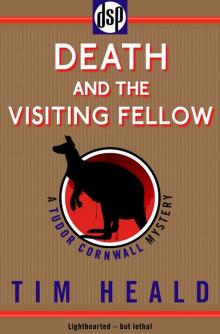 Death and the Visiting Fellow
Death and the Visiting Fellow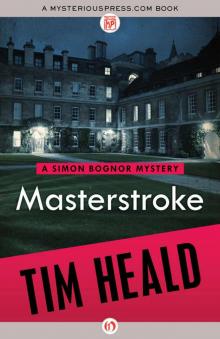 Masterstroke (The Simon Bognor Mysteries)
Masterstroke (The Simon Bognor Mysteries) Deadline (The Simon Bognor Mysteries)
Deadline (The Simon Bognor Mysteries)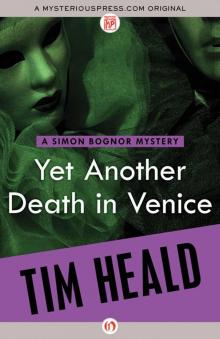 Yet Another Death in Venice (The Simon Bognor Mysteries)
Yet Another Death in Venice (The Simon Bognor Mysteries) Just Desserts (The Simon Bognor Mysteries)
Just Desserts (The Simon Bognor Mysteries)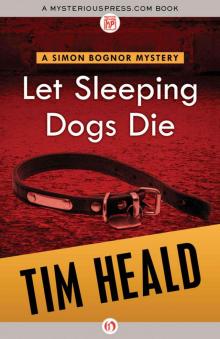 Let Sleeping Dogs Die (The Simon Bognor Mysteries)
Let Sleeping Dogs Die (The Simon Bognor Mysteries)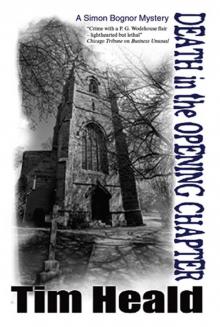 Death in the Opening Chapter
Death in the Opening Chapter Blue Blood Will Out (The Simon Bognor Mysteries)
Blue Blood Will Out (The Simon Bognor Mysteries)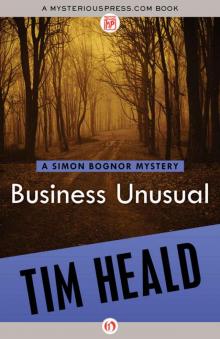 Business Unusual (The Simon Bognor Mysteries)
Business Unusual (The Simon Bognor Mysteries)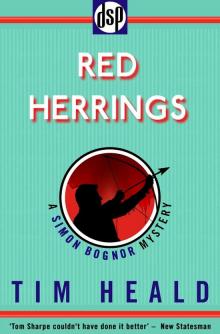 Red Herrings
Red Herrings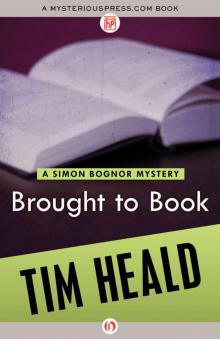 Brought to Book (The Simon Bognor Mysteries)
Brought to Book (The Simon Bognor Mysteries)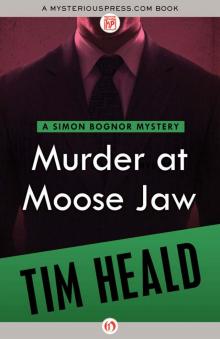 Murder at Moose Jaw (The Simon Bognor Mysteries)
Murder at Moose Jaw (The Simon Bognor Mysteries)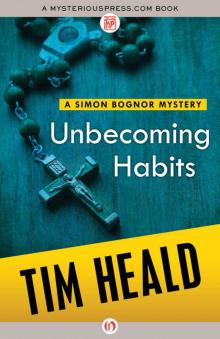 Unbecoming Habits (The Simon Bognor Mysteries Book 1)
Unbecoming Habits (The Simon Bognor Mysteries Book 1)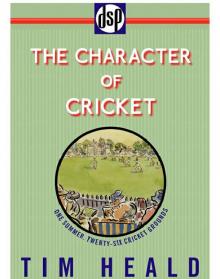 The Character of Cricket
The Character of Cricket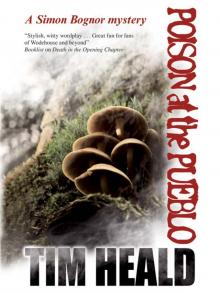 Poison At The Pueblo
Poison At The Pueblo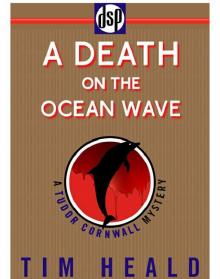 A Death on the Ocean Wave
A Death on the Ocean Wave